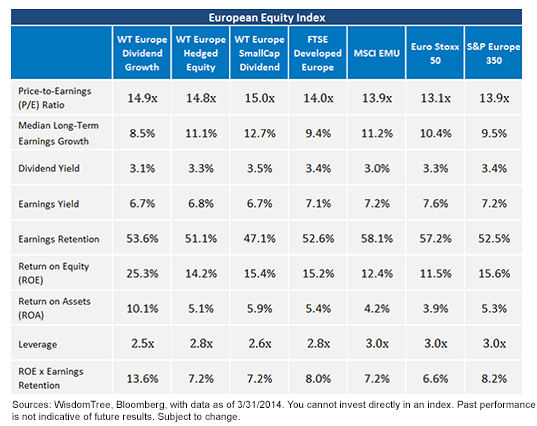3 Strong European dividend ETFs
Post on: 28 Май, 2015 No Comment

CharlesSizemore
Charles’s Latest Posts
Last year, I compared U.S. dividend ETFs and gave readers a simple choice.
If you want current income, a high-yielding option like the iShares Dow Jones Select Dividend ETF DVY, +1.37% is, I believe, your best option.
But for long-term growth, I think you might be better off investing in the Vanguard Dividend Appreciation ETF VIG, +1.26% Though it yields little more than the broad S&P 500, it is comprised of companies with a long history of raising their dividends. I consider VIG a one-stop shop for high-quality growth companies.
I use both ETFs in my portfolios. VIG is the largest holding in both my Tactical ETF portfolio and in my Strategic Growth Allocation portfolio, and DVY is a core income holding in my Strategic Growth Allocation.
But what about European dividend payers? After two years of crisis, European stocks are cheaper than their American rivals, and they tend to pay out a higher percentage of their profits as dividends.
Here, I believe investors have several viable choices. The first is the Stoxx European Select Dividend ETF FDD, +0.46% This ETF holds 30 of Europe’s highest yielders. offering a juicy 4.9% dividend (as of 3/6/13). Unfortunately, it is a little too heavily weighted in financials for my liking. Nearly 40% of the ETF is invested in banks and insurance companies; I’d prefer to see that number well below 20% given the current macro risks to Europe’s financial system. That said, one of FDD’s largest holdings is Spain’s Banco Santander SAN, +1.48% which I own in my aggressive Sizemore Investment Letter portfolio .
WisdomTree offers an ETF in this sector that offers high dividend yield but with zero exposure to the financial sector: the International Dividend ex-Financials ETF DOO, +0.93%
Though not technically a Europe fund, as it has exposure to Australia, Japan, and other developed markets, 70% of DOO is invested in European stocks. And for a high-yielding, dividend-focused ETF, the fund is surprisingly light in utilities. Utility companies constitute only 14% of the portfolio as of early March, which I consider a positive. Utilities are slow-growth (and arguably no-growth) industries in much of the developed world.
DOO sports a dividend yield of 4.0% (as of 3/6/13), which is, I’d say, remarkable given its sector diversification. In an income-oriented portfolio, I believe WisdomTree’s offering isn’t a bad choice.

Finally, I’d like to touch on the PowerShares International Dividend Achievers ETF PID, +0.58% which is essentially an international version of the Vanguard Dividend Appreciation ETF I mentioned at the beginning of this post. Like DOO, PID isn’t technically a Europe fund, but Europe is the largest geographic area represented.
There are a few idiosyncrasies worth noting. To be included in PID, a company must be incorporated outside the U.S. but must trade as an ADR, GDR or on the U.S. or London exchanges. The ETF is weighted by dividend yield, so the stock with the highest weighting. at 4.4%, is Teekay Offshore Partners TOO, -0.63% Tanker stocks are volatile, and this isn’t the sort of stock I would normally want in a conservative dividend portfolio. Unilever UN, +0.60% is a stock that I would (and, in fact, do) put in a conservative dividend portfolio, but it is included in the PowerShares ETF twice. once for the Dutch-traded shares (UN) and once for the British-traded shares (UL).
Still, even with its quirks, I believe PID is an excellent ETF choice for all of the same reasons as VIG. In my opinion, there is no better signal of quality than a consistent history of raising a company’s dividend.
PID yields less than the other ETF options, at 2.6% (as of 3/6/13). But like VIG, it should be considered a high-quality growth ETF rather than a pure income ETF.
This commentary doesn’t constitute individualized investment advice. The opinions offered herein aren’t personalized recommendations to buy, sell or hold securities.














